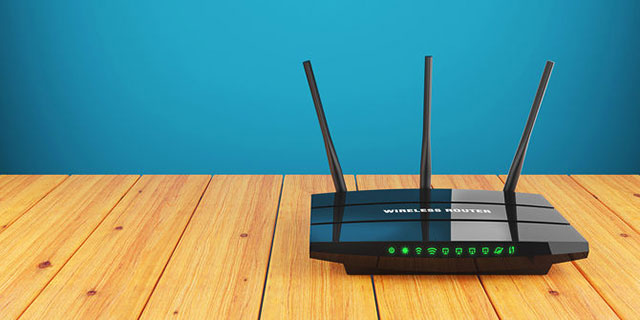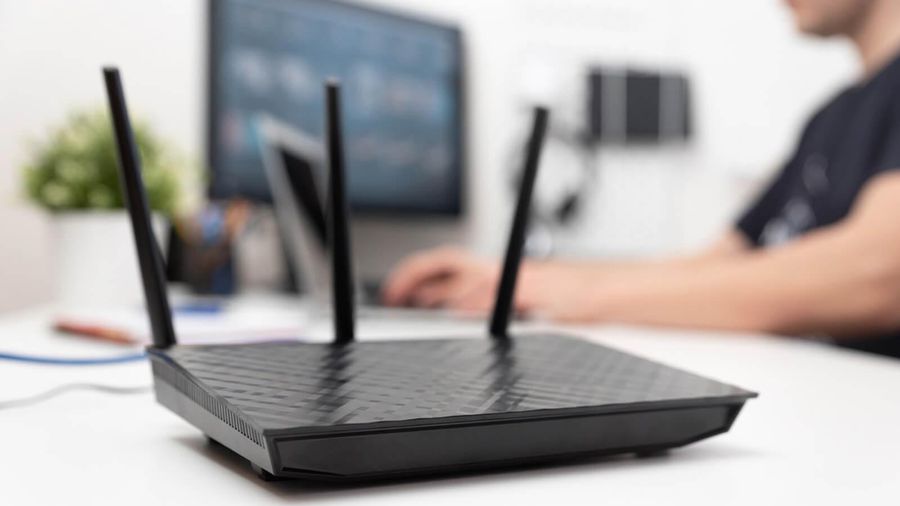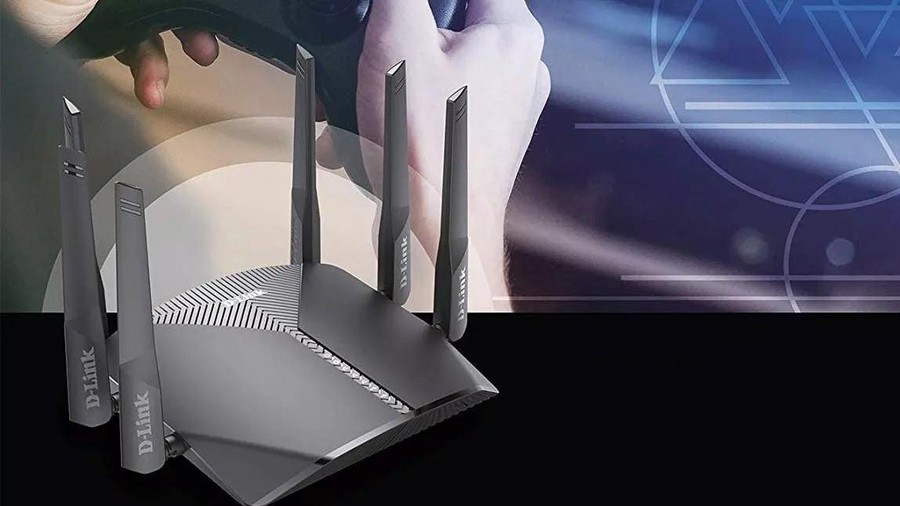What is MU-MIMO? Why should your next WiFi router have MU-MIMO?
This is probably not so important if you often use Ethernet instead of WiFi, but think beyond the regular PC. Smart phones, tablets, Kindle, cameras, child monitoring devices and many other devices only support Wi-Fi. With so many Wi-Fi-connected devices, MU-MIMO is even more important.
MU-MIMO stands for Multi-User, Muliple Input, Multiple Output. If you do not understand well, do not worry, this technology is much simpler than it looks and the benefits it brings are well worth knowing.
Wi-Fi time before MU-MIMO
In order to understand the benefits of MU-MIMO, first of all need to understand how traditional routers work. If you already know, you can skip it and read it later.
Before MU-MIMO, the wireless router mainly used SU-MIMO technology, first launched as Wi-Fi 802.11n standard in 2007 and stands for Single-User, Multiple Input, Multiple Output. SU-MIMO allows the router to simultaneously send and receive data to and from a device (Multiple Input / Output). Before SU-MIMO, the router can only send or receive at a time.
SU-MIMO has significantly increased the wireless data transfer rate, but still has a large minus point, it can only send / receive data with one device at a time (Single-User). If your router is old or cheap, it is more likely to only work on one device at a time.

The difference between SU-MIMO and MU-MIMO
This may not sound right. Currently, you may be using computers, laptops, smart TVs and some phones and tablets, while they all use Wi-Fi for a while. What is "a device at a time"?
Think of SU-MIMO technology router as a dealer. There are 4 players on the table but the handler can only give 1 person at a time. Imagine that each card is a data packet, which means that the router using SU-MIMO technology will have to connect to each device in turn and quickly switch to another device that makes it seem like they are connected simultaneously. There will be a huge bottleneck due to the new 802.11ac Wi-Fi standard.
802.11ac Wi-Fi standard (Wave 1 and Wave 2)
There are a few things you need to know to understand more about MU-MIMO, which is the 802.11ac Wi-Fi standard. If you already know about the AC router, go to the following section.
802.11ac Wi-Fi standard was born in 2013, 6 years later 802.11n. The new specs offer some improvements, increasing the maximum Wi-Fi speed but not all that can be realized immediately. The manufacturer has brought different aspects of 802.11ac in two stages: Wave 1 and Wave 2.
WiFi - 802.11b, 802.11a, 802.11g, 802.11n and 802.11ac standards
Wave 1 started in 2013 only bringing the characteristics of 802.11ac to be considered less risky. For example, extending the frequency from 40MHz to 80 MHz and supporting 256 QAM modulation is quite simple, the manufacturer can produce a new model router with these characteristics and label AC there without even meet the full standard.
Wave 2 started in 2015 and brought more difficult characteristics of 802.11ac, most importantly MU-MIMO. If your AC router is available before 2015, it does not have MU-MIMO.
What is MU-MIMO and why do you need it?
If SU-MIMO is a dealer, MU-MIMO is a division with 4 hands, each pair will work with one player. MU-MIMO allows the router to break up individual packets and deliver them to multiple devices at the same time.
Imagine you're watching Netflix on your computer, and your lover uses Skype on your phone. With SU-MIMO, the video may be jerky or degraded because the router frequently has to switch between two devices to send data. But with MU-MIMO, it sends data continuously to both people.

Wi-Fi routers using MU-MIMO technology will become increasingly popular
Remember that MU-MIMO does not increase the maximum speed. It only helps you not get off the line when connecting multiple devices, making the router not work too hard. Instead of dividing the attention for each device, it will serve you all the time.
This is also a limitation because the router uses MU-MIMO technology only 2x2, 3x3 and 4x4 versions, meaning that it can only serve data streams between 2, 3 and 4 devices. If your router supports MU-MIMO 4x4, when using 6 devices, the router will have to split the data and turn it into SU-MIMO.
Another minus point is that the MU-MIMO signal only works on devices that can decode the 802.11ac protocol. This is no longer a concern as in the next few years 802.11ac will become more popular but remember that older devices will not take advantage of this technology.
See more:
- Top 7 best Wifi routers in 2017
- The best 8 long-range Wifi routers in 2017
- 6 steps to block, block website with TP-Link router
- Why restart the router can fix many problems?
You should read it
- What is 4 x 4 MIMO? Is your phone needed?
- Top best 802.11ac Wi-Fi wireless router
- Review the Linksys EA7500 AC1900 MU-MIMO router
- Instructions on how to use wifi adapter Tenda A
- Instructions on how to use wifi adapter Tenda A9
- Wi-Fi routers for offices serve both high-speed entertainment
- 11 best long-range Wifi routers 2018
- How to choose a gaming router
May be interested
- Mi AIoT Router AX3600: WiFi router 6, 7 antennas, priced at 1.99 million VND
 this premium router is equipped with qualcomm's ipq8071a processor (4 cortex-a53 cores, clocked at 1.0ghz).
this premium router is equipped with qualcomm's ipq8071a processor (4 cortex-a53 cores, clocked at 1.0ghz). - Top 7 cheap Wifi routers in 2018
 if you are looking for a cheap wifi router, take a look at the following list of 7 best router devices 2018!
if you are looking for a cheap wifi router, take a look at the following list of 7 best router devices 2018! - My WIFI Router - Free and convenient Wifi Broadcasting Software
 my wifi router is a software that turns laptop or desktop computers with wifi card into an easy wifi hotspot. free, effective, fast and no junk software.
my wifi router is a software that turns laptop or desktop computers with wifi card into an easy wifi hotspot. free, effective, fast and no junk software. - Should I turn on the WiFi router continuously or not?
 some people believe that turning on the wifi router constantly will make the device quickly fail, waste power and vulnerable to attack. however, most users say it's not really necessary to turn off the router when not in use, especially at night.
some people believe that turning on the wifi router constantly will make the device quickly fail, waste power and vulnerable to attack. however, most users say it's not really necessary to turn off the router when not in use, especially at night. - Instructions for choosing the right Wi-Fi router
 how to choose a router to suit your needs? in this article we will give you some tips on choosing the best router for your needs.
how to choose a router to suit your needs? in this article we will give you some tips on choosing the best router for your needs. - How does WiFi work without a router?
 from the outset, ieee introduced the standard that wifi networks can operate without the need for a router or switch. configuration that includes network hardware is called an infrastructure mode. wifi networks that work without a router will be in ad hoc mode.
from the outset, ieee introduced the standard that wifi networks can operate without the need for a router or switch. configuration that includes network hardware is called an infrastructure mode. wifi networks that work without a router will be in ad hoc mode. - Wifi Router Totolink N350RT - Reliable Wifi Router for you
 currently, on the market there are many devices wifi router born with different features. this has made many of you quite confused and do not know which product to choose?
currently, on the market there are many devices wifi router born with different features. this has made many of you quite confused and do not know which product to choose? - Top 5 best Xiaomi WiFi routers
 wireless routers are being used in almost every corner of the world today. the best wireless router will ensure your network connections are strong and reliable.
wireless routers are being used in almost every corner of the world today. the best wireless router will ensure your network connections are strong and reliable. - 'Great' to speed up Wifi to Wireless Router
 suggest some reading methods to help speed up and improve the performance of wireless router devices in the home.
suggest some reading methods to help speed up and improve the performance of wireless router devices in the home. - 4 best models of Mesh router for increasing WiFi wave 2020
 if your office or house has a large area, using a wifi router will definitely not cover the whole house. at this point, mesh wifi router models will be the appropriate choice.
if your office or house has a large area, using a wifi router will definitely not cover the whole house. at this point, mesh wifi router models will be the appropriate choice.










 This is the person who created the world's first computer virus
This is the person who created the world's first computer virus What is COM Surrogate or dllhost.exe and why does it run on the computer?
What is COM Surrogate or dllhost.exe and why does it run on the computer? Dual boot (Dual boot) with virtual machine: Which one should you choose?
Dual boot (Dual boot) with virtual machine: Which one should you choose? How to register for 25 days for free using Funring, MCA, mFilm, My music, ... MobiFone
How to register for 25 days for free using Funring, MCA, mFilm, My music, ... MobiFone Want to have a healthy life, practice 12 habits of this technology right now
Want to have a healthy life, practice 12 habits of this technology right now What is backdoor?
What is backdoor?